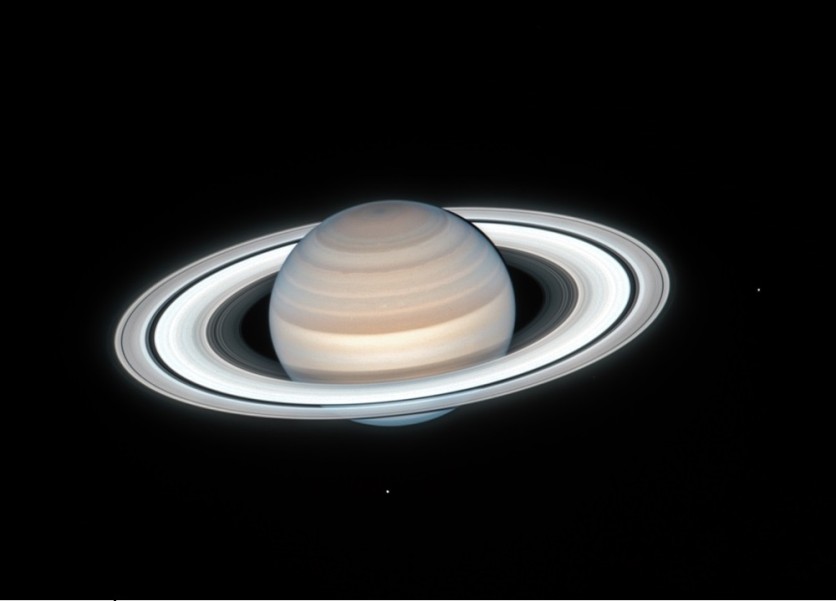NASA and ESA's telescope captured the amazing image on July 4. NASA said in a statement on Thursday, July 23, that the "multiple banded cloud activity" was increasingly radiated as the northern hemisphere endures the summer heat.
The space agency also said astronomers took the shot when the Earth gets its best view of the planet. The photo features some details of the planet, which NASA regard as "the lord of the rings."
Taken at a distance of 839 million miles from Earth, the image shows the iconic icy rings, and its origin continues to be one of the biggest mysteries in the solar system. "Just how and when the rings formed remains one of our solar system's biggest mysteries," NASA said in the statement.

It remains unclear whether the planet and the rings developed at the same time or if the rings emerged at a much later time. Nevertheless, this unique feature makes Saturn the most recognizable planet in the solar system.
However, their different orbits lead to changes in the distance, which can range between 746 million miles and 1 billion miles away from one other.
The image also shows Saturn's unique elements of features like the colored bands, small atmospheric storms, and a reddish cloud over the northern hemisphere, which is quite different from past observations.
Read also: Never-Before-Seen Imagery of Ganymede's North Pole Unveiled to the Media
The atmospheric storms in Saturn come and go while the bands' colors tend to change each year. The Hubble's images were taken in 2019 and show a slightly different pattern with the bands' colors, although the "hexagon" on the North Pole remains apparent. The six-sided pattern was first discovered in 1981 by NASA's Voyager 1 spacecraft.
NASA thinks this may be due to increased sunlight that may change the atmospheric circulation or the amounts of produced photochemical haze, or perhaps the heat may have reduced the ice in the atmosphere.

"It's amazing that even over a few years, we're seeing seasonal changes on Saturn," NASA's Goddard Space Flight Center Lead Investigator Amy Simon said. While it is summer on the northern hemisphere, the south pole shows a blue hue, which suggests changes in the winter hemisphere.
Saturn's moons glow amid the darkness
According to CNET, two of Saturn's moons can also be seen in the image. Mimas and Enceladus show as small dots amid the "darkness of space." In the east of Saturn is Mimas while Enceladus is seen in the south.
Although the two moons were not seen in the 2019 image of the planet, it gives humans a magnificent view of Saturn's ring system, which is tilted toward the Earth.
Meanwhile, astronomers will continue to monitor the planet every year to track changes in weather patterns and other alterations as part of the Outer Planets Atmospheres Legacy (OPAL) project. Scientists aim to understand the dynamics in the atmosphere and evolution of our solar system's gas giant planets. For Saturn, astronomers track the storms and shifting weather patterns.
Read also: Astronomers Unveil Mysterious Photo of Sun-Like Star Surrounded by Pair of Exoplanets
ⓒ 2025 TECHTIMES.com All rights reserved. Do not reproduce without permission.




